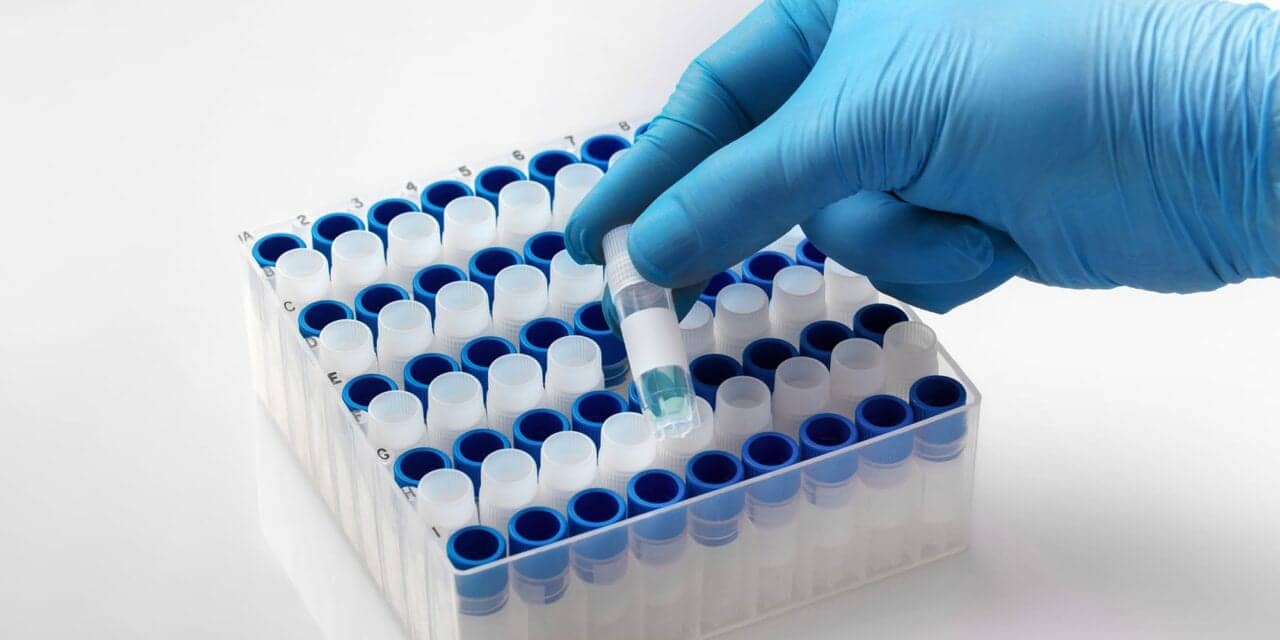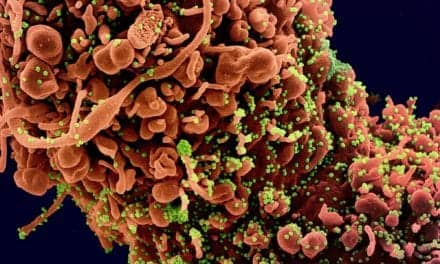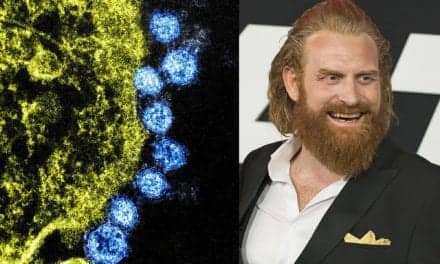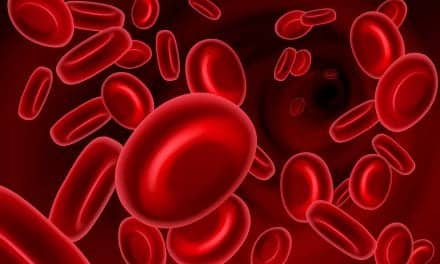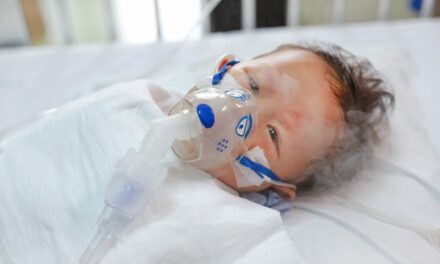By Sabin Russell / Fred Hutch News Service
During the frightening early weeks of the COVID-19 pandemic in March of 2020, Kiehl Sundt, of Sequim, Washington, became one of the first people on Earth to receive an experimental dose of Moderna’s mRNA vaccine.
A year later, Sundt rolled up his sleeve again. At Seattle’s Fred Hutchinson Cancer Center, he received an injection loaded with live malaria parasites for a clinical trial of a potential vaccine against that global killer.
This month, Sundt was back in a Fred Hutch exam room, receiving a shot of live bacteria — comparatively harmless microbial cousins to human tuberculosis — in a study to help take researchers a step closer toward a better vaccine to stop that scourge.
“Hardworking doctors came up with these vaccines, and I want to help them along. When you look at the number of people who die of COVID-19, TB and malaria, I’m happy to do what I can to bring these vaccines to people one day sooner,” said Sundt, an attorney in his coastal town more than two hours northwest of Seattle.
With nine similarly motivated volunteers, he will be visiting the Fred Hutch Prevention Center frequently this holiday season. Each will have their skin biopsied and their blood checked in this small experiment that started with an injection living organisms known as Bacillus Calmette-Guérin, or BCG.
A need for better drugs and vaccines
Chances are you have never heard of BCG, a 100-year-old vaccine that is still given in the developing world to protect millions of children from tuberculosis. It happens to be the most widely used vaccine on the planet, with more than 4 billion doses delivered. Yet BCG is an imperfect vaccine that wanes in effectiveness as children age into adolescence. For that reason, and because TB is not a major public health problem in the U.S., it is seldom offered in this country.
Development of more effective TB drugs and vaccines is a pressing, unmet medical need, underscored by World Health Organization data. In 2021, tuberculosis caused 1.6 million deaths around the globe, making it the second leading cause of death each year from an infectious disease, only recently surpassed by COVID-19. In sub-Saharan Africa, TB remains a leading cause of death in people living with HIV, even after they have started taking antiviral drugs.
On the opening day of the Seattle study, each participant received their dose of BCG via an injection on their forearm, just under the skin. In the coming weeks, scientists led by Fred Hutch vaccine scientist Jim Kublin, MD, MPH, will apply 21st century laboratory tools — under tightly controlled conditions — to analyze how their immune systems respond to BCG and to isoniazid, a drug commonly used to treat TB.
Kublin is medical director for the Fred Hutch-based MCTC, or Seattle Malaria Clinical Trials Center; and executive director of the HIV Vaccine Trails Network, which has coordinated over 100 trials for the prevention of HIV, tuberculosis and COVID-19.
The idea of his latest, unique study is to find out whether BCG — made of live but hobbled cousins of the TB germs that afflict humans — might safely work as a stand-in for real tuberculosis germs in future clinical trials to assess new drugs and better vaccines to stop the disease.
One of the quickest and most effective ways to test a vaccine is via a “human challenge model,” where volunteers are given the experimental shots, and then are infected with the germ the vaccine is meant to block. Yet there are obvious risks involved, so they are seldom conducted.
But Kublin has run several human challenge trials in malaria research, including the one in which Sundt recently participated, because they are quickly carried out and need only a small number of volunteers to yield clear results. Deliberately exposing someone to malaria sounds dangerous, but participants are promptly treated with drugs that can safely clear the parasite before it can cause harm.
TB is different. While Mycobacterium tuberculosis is also treatable, it can take months to achieve a cure, and the bacteria may develop resistance to TB drugs. It would pose a significant risk to trial participants.
“The consensus is that it isn’t ethical to use TB for a human challenge at this time,” Kublin said. “I agree with that.”
But he wondered whether BCG — proven safe with nearly a century of usage — might work as a proxy for TB in human challenge studies. Such trials might deliver early signals about the safety and effectiveness of new medications for TB, without exposing participants to the dangerous strain. The current study is testing that concept.
It took four years — including interruptions of research caused by the COVID-19 pandemic — to get regulatory clearance and consent of the vaccine maker, but on December 6, 2022, the 10-person study began administering BCG to volunteers.
Testing how the drug and immune system repond to BCG
The participants each received an especially large dose of BCG, containing 10 times the amount of bacteria contained in a normal vaccine. Just three days after their forearm injections, five of the volunteers will be assigned at random to receive doses of isoniazid, pills than can snuff out an early infection of either TB or Mycobacterium bovis, the TB-like bacterium in BCG.
The other half of the group will not take the pills and will serve as controls. Since BCG is safe for participants even at the higher dosage, the five in the control group will not need any treatment to rid themselves of the living bacteria. The goal of the study will be to examine, closely, how differently the immune systems of the ten participants respond to BCG over time, with or without the isoniazid treatment.
Although BCG has been given to babies for a century, the human immune response to the TB-like bacterium and to the drug have never been studied like this before — subject to some 21st century laboratory instruments.
The most important of these is a test, called a pre-ribosomal messenger RNA assay, which will allow Kublin’s team to precisely measure and track the BCG germs as they are gradually wiped out by either the drug or the natural immune responses of the participants.
If the experiment with isoniazid works as anticipated, it will provide rich data that show exactly how this well-established drug works against the BCG strain, M. bovis. Then Kublin and his team will be a step closer to using this ethically acceptable stand-in for M. tuberculosis to evaluate, in similar trials, new generations of drugs or vaccines against dangerous human TB.
“Ultimately, this is a stepping stone to establishing a human challenge model for TB, using BCG as a proxy,” Kublin said.
To recruit participants in the trial, Kublin’s team relied on a registry of more than 2,000 Seattle area residents who signed up to show their willingness to volunteer. The Seattle MCTC Registry was originally built to recruit participants for malaria studies but was expanded to reach participants in trials looking at other diseases, said Gift Nwanne, MPH, who is study coordinator for the tuberculosis trial.
Nwanne brings to these trials his own personal experiences with malaria. Growing up in Kaduna, a state in northwestern Nigeria, he had multiple bouts of the mosquito-borne illness. His interest in health care brought him to work in clinics were people were treated for a different threat, TB.
“I have had colleagues infected with TB. I also worked in HIV, and TB is a leading cause of mortality for people with HIV/AIDS,” he said. “BCG is the only vaccine for TB. We should have multiple vaccines for it.”
A microbiologist becomes a research study volunteer
Seattle resident Susan Strenk, MPH, is a microbiologist at Fred Hutch and was also a participant in Kublin’s malaria study before she volunteered for the tuberculosis trial. In the lab of David Fredricks, MD, she explores microbial communities — the microbiome — developing an understanding of clinical studies from a laboratory researcher’s perspective.
“I used to grow TB and other mycobacteria from patients in a clinical lab, when I worked at Harborview (Seattle’s public hospital),” Strenk said. “So, it is kind of cool to see the other side of it.”
Because of her experience in the malaria study, Strenk was already familiar with the discomfort of injections and blood draws, as well as the health risks sometimes involved. She said participating in studies helps her in her own work. By volunteering, she said she is gaining a better idea of the expectations, concerns and preferences of patients and other participants in clinical trials.
“You know what studies are like when you are conducting them, but you don’t know what it is like for the people who enroll in them,” Strenk said. “I feel like it gives me an inside look at things.”
Working in the field, and experiencing clinical trials as a participant, have eased any concerns she might have had about such experiences.
“I trust the doctors,” she said. “I know they are going to be watching me, and if something goes wrong, I’m not too worried, as I’ll get proper care.”
Collaborators in the BCG study include Chetan Seshadri, MD, and his colleagues at the University of Washington Department of Global Health; TB experts at the Cape Town HVTN Immunology Laboratory, in South Africa; and Julie McElrath, MD, PhD, senior vice president and director of the Vaccine and Infectious Disease Division and holder of the Joel D. Meyers Endowed Chair at Fred Hutch.
Sabin Russell is a former staff writer at Fred Hutchinson Cancer Center. For two decades he covered medical science, global health and health care economics for the San Francisco Chronicle, and he wrote extensively about infectious diseases, including HIV/AIDS. He was a Knight Science Journalism Fellow at MIT and a freelance writer for the New York Times and Health Affairs.
This article was originally published by Fred Hutch News Service at https://www.fredhutch.org/en/news/center-news/2022/12/bcg-tb-vaccine-trial.html.

